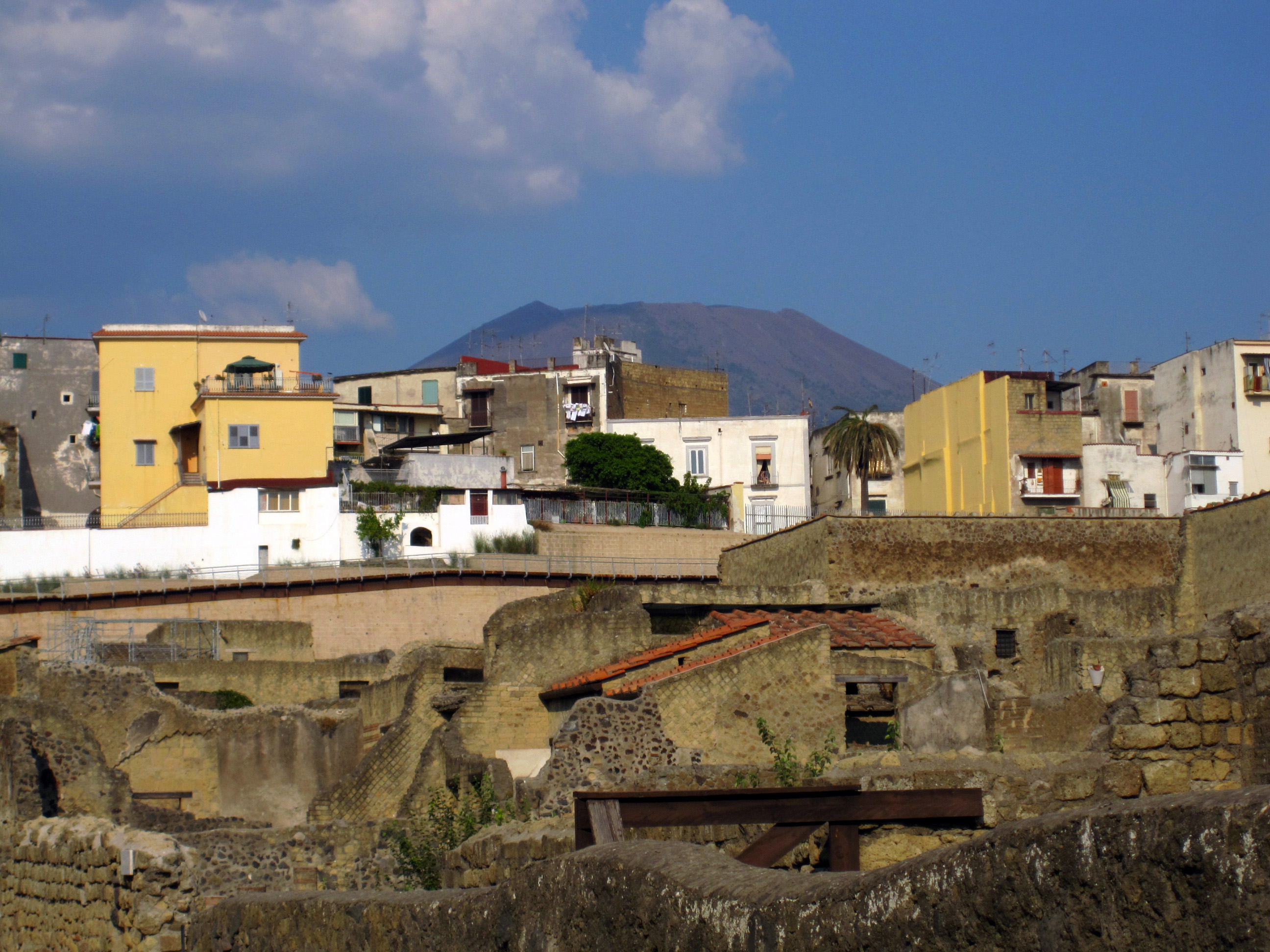 Vesuvius blew on August 24, 79 AD. Pliny the younger saw it all from his boat and wrote that the explosion looked like a giant umbrella pine tree. Today the eruption column is guestimated to have been close to 20 miles high. His uncle Pliny the elder was in command of the Roman fleet nearby and decided to take a closer look and died from either a heart attack or poison gas? Or just stupidity. We’re on our way to Ercolono (Herculaneum) on August 21st and Pompeii on August 22nd. We’ll just miss the anniversary.
Vesuvius blew on August 24, 79 AD. Pliny the younger saw it all from his boat and wrote that the explosion looked like a giant umbrella pine tree. Today the eruption column is guestimated to have been close to 20 miles high. His uncle Pliny the elder was in command of the Roman fleet nearby and decided to take a closer look and died from either a heart attack or poison gas? Or just stupidity. We’re on our way to Ercolono (Herculaneum) on August 21st and Pompeii on August 22nd. We’ll just miss the anniversary.
Italy has the only active Volcanoes in Europe and there are 4 of them.
Vesuvius erupted more than 30 times since 79 AD. The last one was in 1944 during the allied invasion of Italy. Italy lost 3 or 4 villages. The US lost 88 B-25 bombers. It’s been quiet for the past 65 years, the longest stretch of silence in over 500 yrs. Given the fact that there was a major earthquake in L’Aquila in April 2009, it might have woken up the sleeping beast. It’s due.
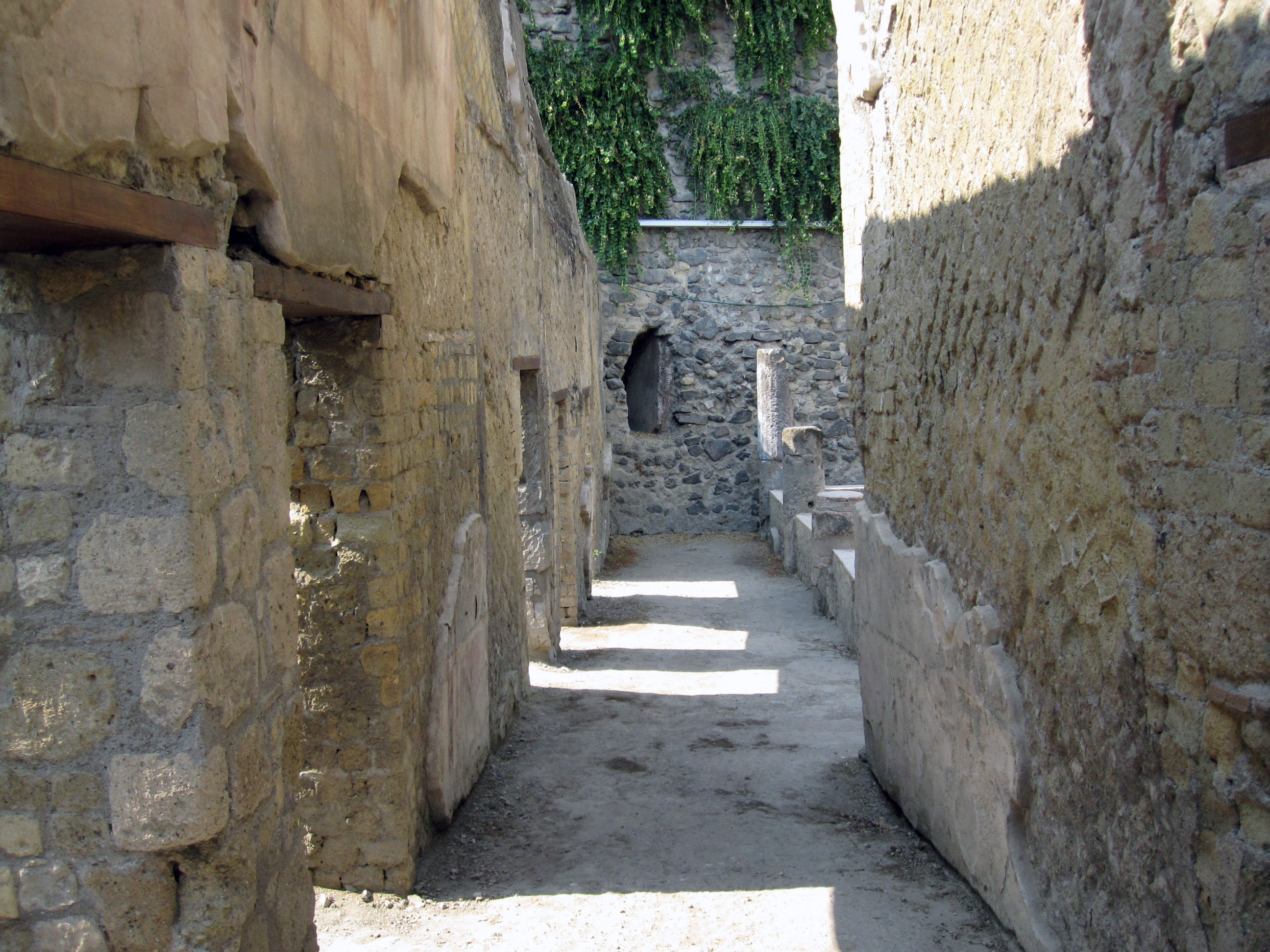 ERCOLANO (HERCULANEUM)
ERCOLANO (HERCULANEUM)
Ercolano was the first city to go. It was less than 3 km from the Volcano and was directly hit with 6 pyroclastic flows of lava possibly moving at rates up to 400 miles per hour. The poisonous gas could have had temperatures of up to 1,800° Fahrenheit. The lava flow was so dense, there was no oxygen and consequently no fires, just 600° F heat. Nothing caught flame. The furniture, doors, woodwork, wooden beams were all preserved in a carbonized state.
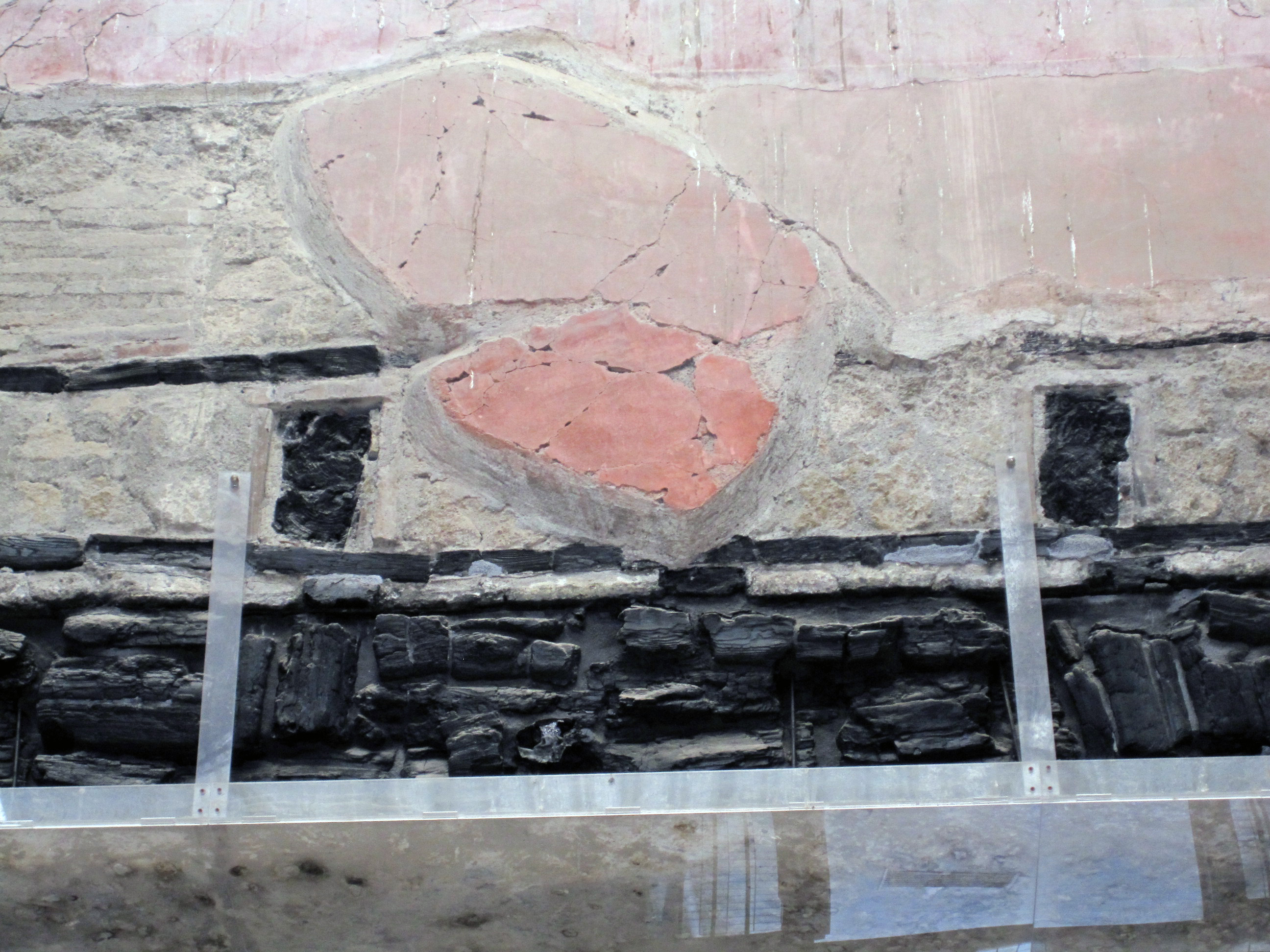 We saw a few examples of wooden beams and doors. A lot of the furniture from Herculaneum is at the Naples Archeological Museum.
We saw a few examples of wooden beams and doors. A lot of the furniture from Herculaneum is at the Naples Archeological Museum.
In 1701 a farmer dug a well into the volcanic soil and discovered some carved marble pieces. He brought them to the authorities and after a short time, the well produced statues, mosaics and enough to get a team of archeologists to begin digging out the city.
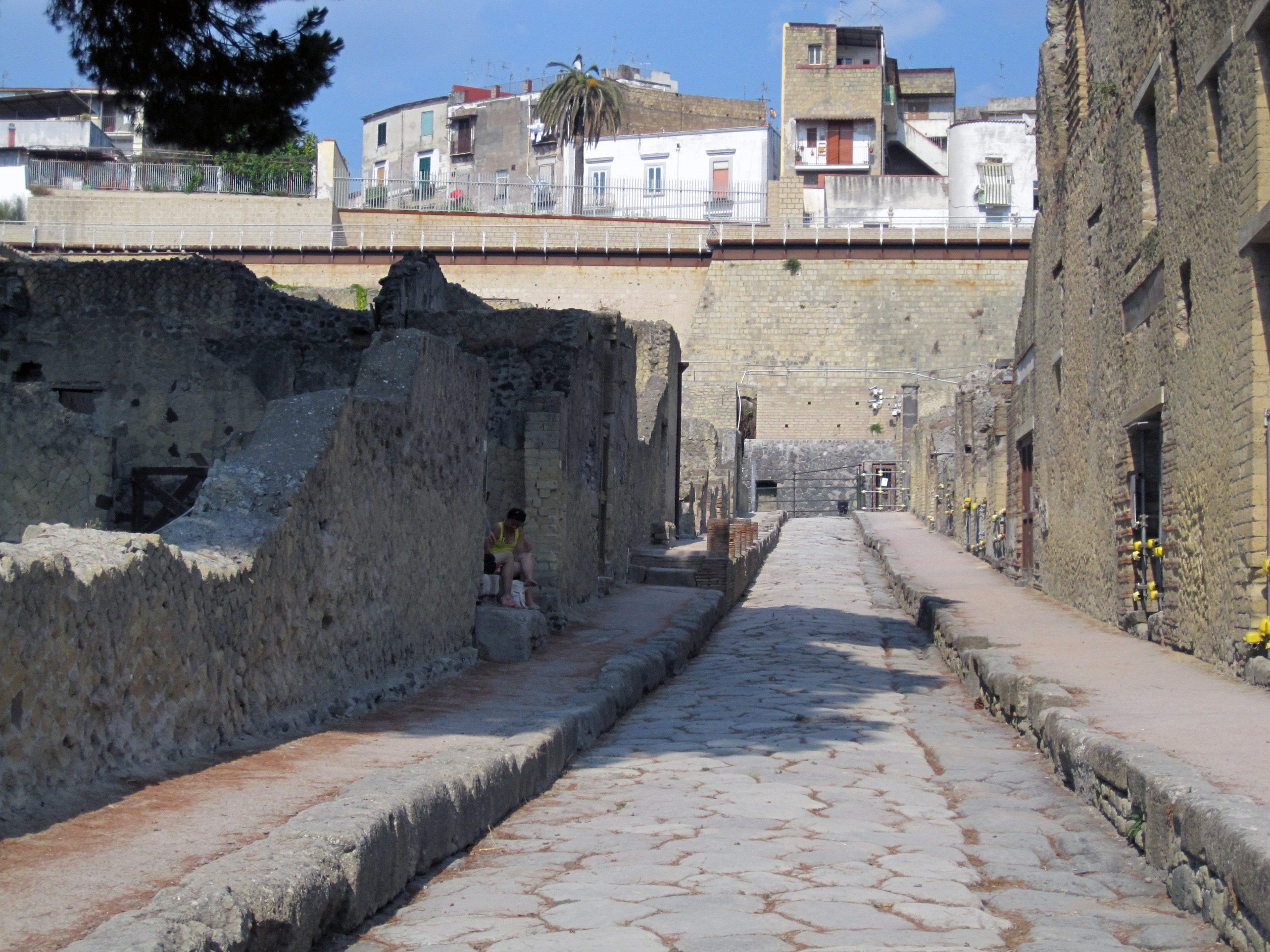 It was buried under at least 50’ of rock and soil. It’s an amazing sight to see the new town built on top of the volcanic ash and the old town buried underneath.
It was buried under at least 50’ of rock and soil. It’s an amazing sight to see the new town built on top of the volcanic ash and the old town buried underneath.
The dig is still going on today. Less than 1/3 of the city has been reveled. This used to be a seaside village. Now it’s close to ½ mile away from the sea.
POMPEII
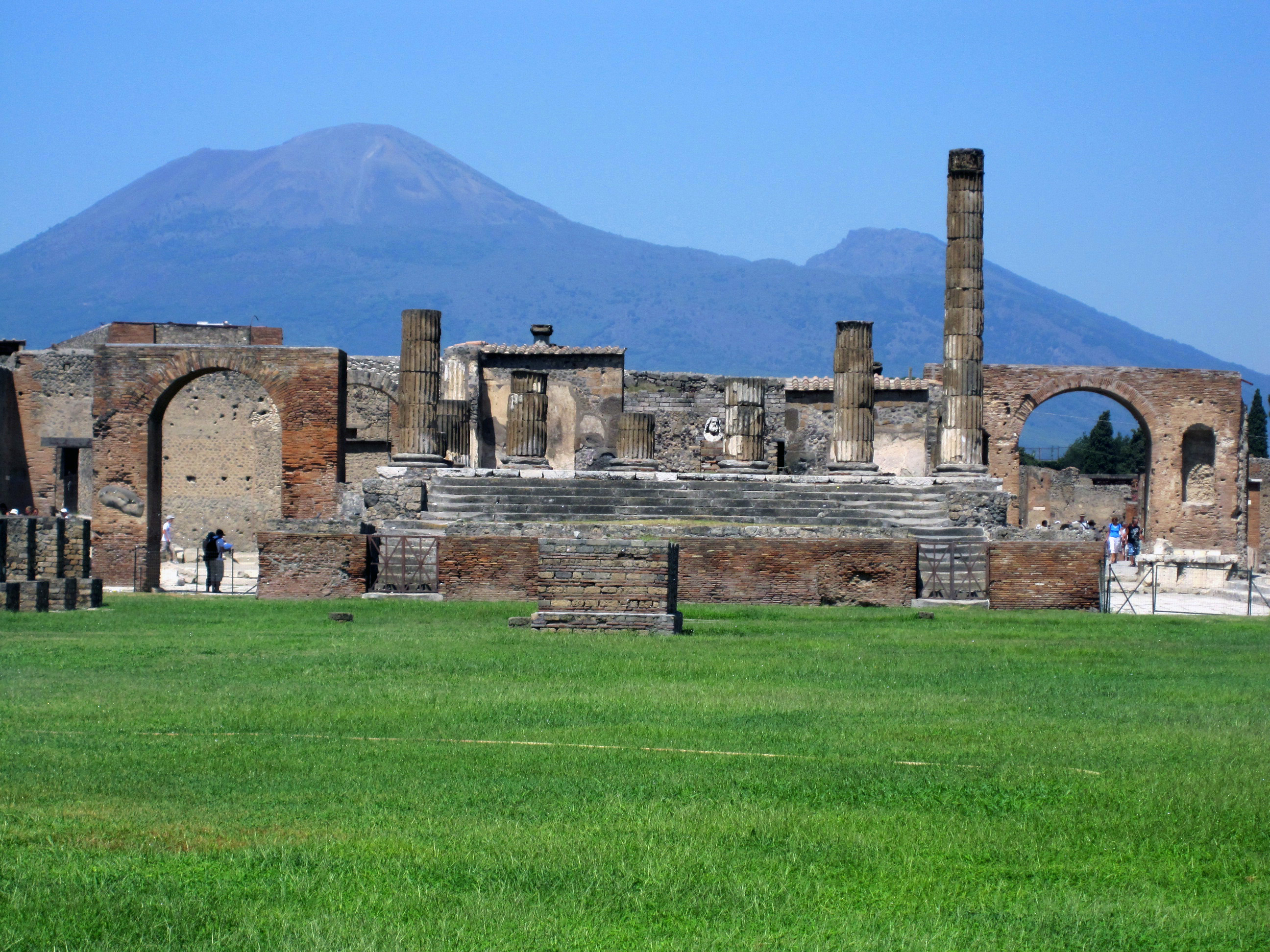 Pompeii got hit later that afternoon. It was about 9km from the Volcano and was hit with only 3 of the pyroclastic flows, which by the time they reached Pompeii had cooled off a bit. Pompeii also got the shower of pumice stones and ash that missed Ercolano. When the Volcano blew a 9’ blanket of stone and ash covered Pompeii. When the stones stopped, the poison gas and lava flows came.
Pompeii got hit later that afternoon. It was about 9km from the Volcano and was hit with only 3 of the pyroclastic flows, which by the time they reached Pompeii had cooled off a bit. Pompeii also got the shower of pumice stones and ash that missed Ercolano. When the Volcano blew a 9’ blanket of stone and ash covered Pompeii. When the stones stopped, the poison gas and lava flows came.
In 62 AD there was a massive earthquake that leveled a lot of the city. Another smaller quake hit again in 64 AD. The reconstruction and renovation of the city was still going on when Vesuvius erupted and luckily, most of the residents were gone. Of the maybe 12,000 people who might have lived in the city, less than 2,000 were caught in the eruption. Some people came back and dug out their possessions, some of the houses were later looted by thieves but after around 600 AD, the city got lost in history until an irrigation canal was built through the area in the 16th century.
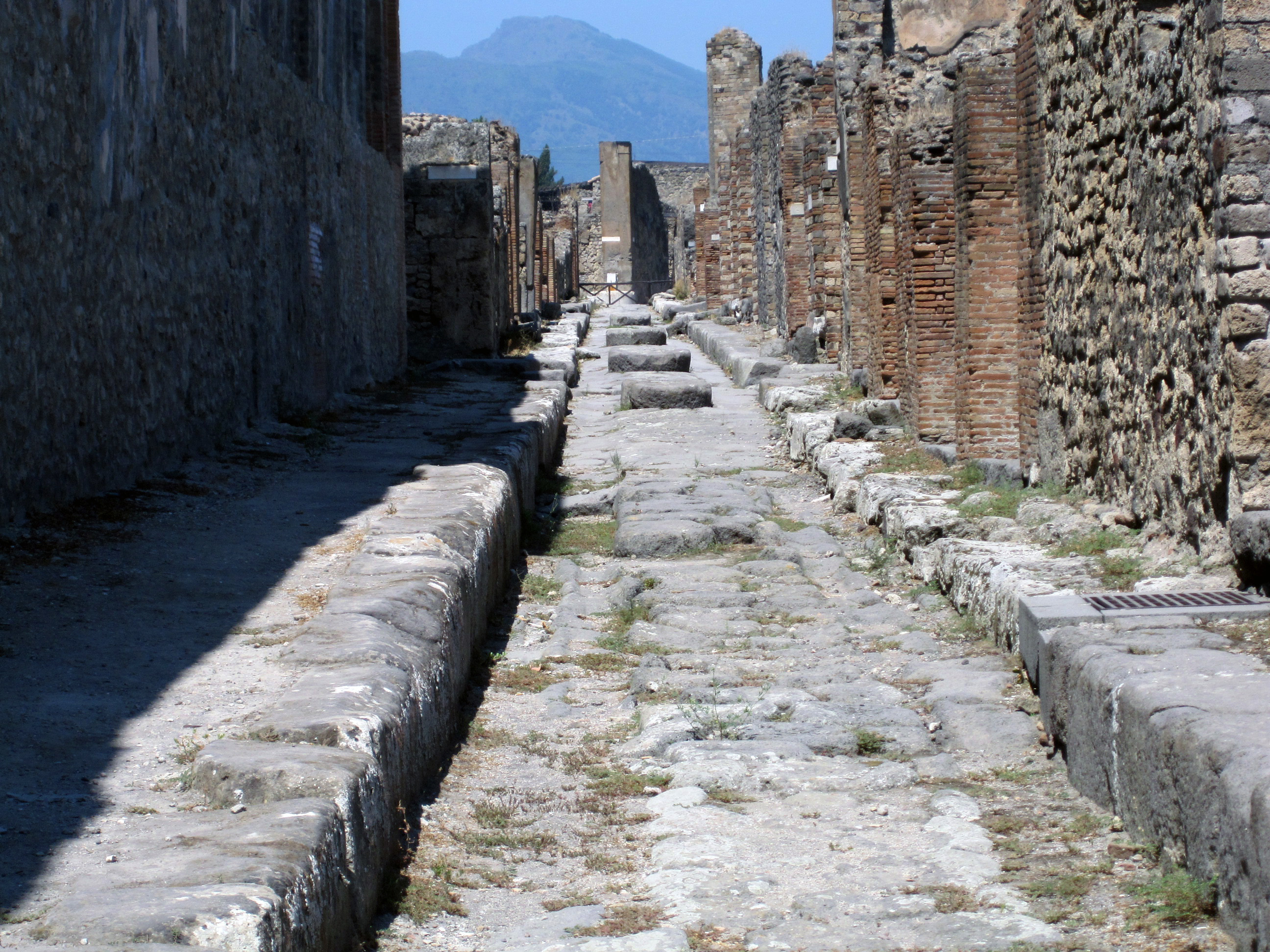 By the 1800’s a full scale excavation was began. It’s still going on. Every year new things are discovered and consequently it’s hard to know what’ll be open and what’ll be closed down. They never tell you at the front gate. Nor do they tell you which streets are closed off. The map they give you is more or less an archeological puzzle. It tells you how you can get from one place to another but once you get there you could easily find you have to go back to the Via del Abbondanza (the main road) and try another route.
By the 1800’s a full scale excavation was began. It’s still going on. Every year new things are discovered and consequently it’s hard to know what’ll be open and what’ll be closed down. They never tell you at the front gate. Nor do they tell you which streets are closed off. The map they give you is more or less an archeological puzzle. It tells you how you can get from one place to another but once you get there you could easily find you have to go back to the Via del Abbondanza (the main road) and try another route.
We spent over 7 hours in the ancient site. It was 94°F, the only shade was inside of the buildings. At least 2 of those hours were from running into dead ends of houses that were closed for further excavation. This is why you go back another time.
While we were planning the trip, I contacted Arethusa.net and was able to reserve private entrances to some of the locations. These sites are only available with pre reservations. The site is in Italian but the visits are free.
 Our first private tour was at the Terme Subburbane (Subterranean Baths) just outside of the ancient city wall. When travelers came to the city, they first went to these baths to “freshen up” before entering the city. Not a bad idea.
Our first private tour was at the Terme Subburbane (Subterranean Baths) just outside of the ancient city wall. When travelers came to the city, they first went to these baths to “freshen up” before entering the city. Not a bad idea.
The most interesting part of these baths in at the entrance. There is a frescoed room with a series of pornographic images positioned over roman numerals. Years ago it was thought that this was a brothel, a special room in the baths. However, the current theory is that is was a changing room. There were probably lockers or spaces under the paintings to put clothes. The porn was a Pompeiian joke so the guests would remember under which sexual act they left their duds.
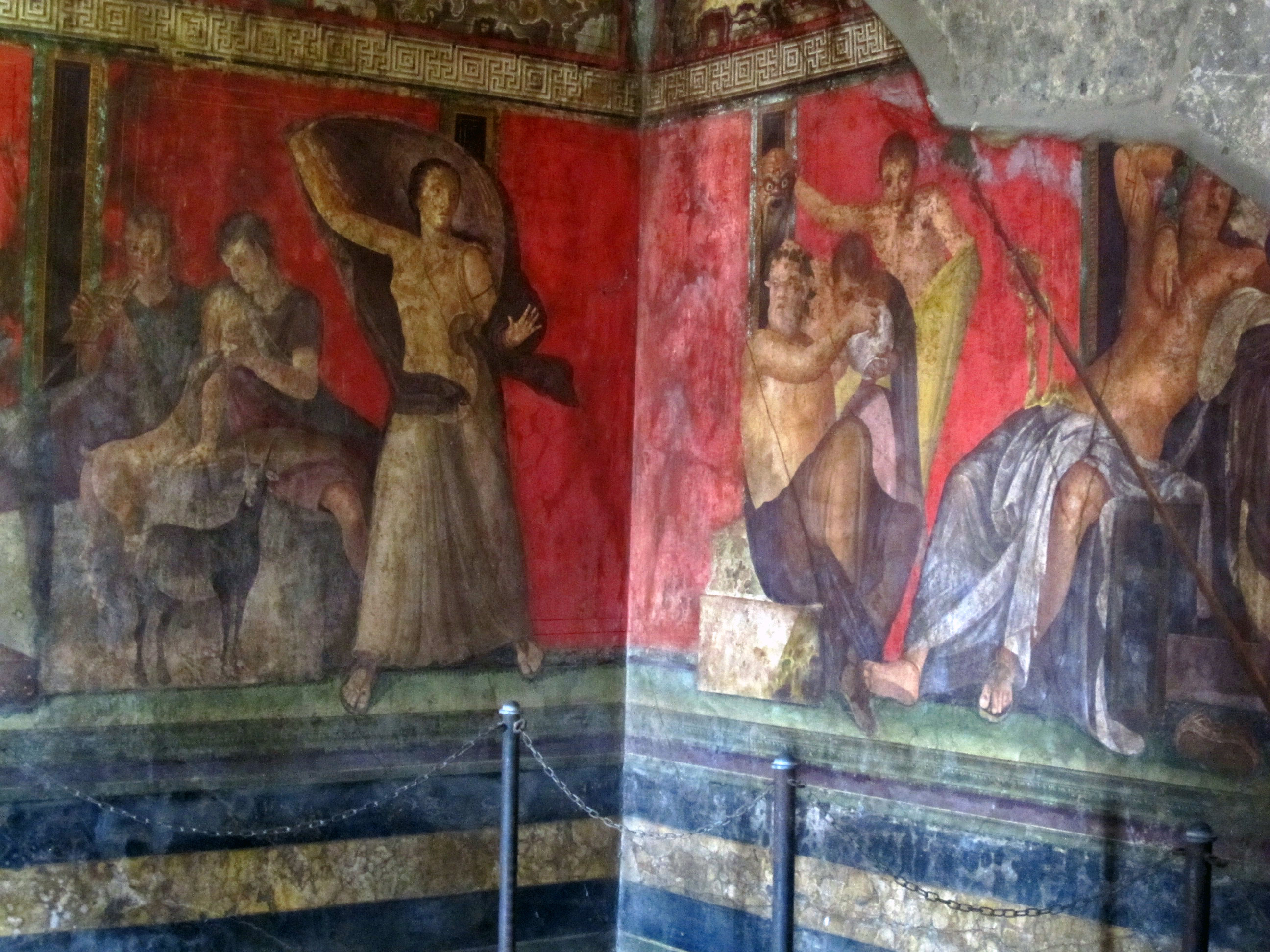 The city has it’s greatest hits or must see locations: Porta Marina (the main entrance) the Basilica (government building), the Forum and markets, the theatres, the amphitheatre, the lupanar (whore house) and the fountains, courtyards and frescos in the villas of wealthy Pompeiian. There are lararium (niches for the household gods) throughout the city. Pompeii still has bakeries and fulleries (clothing dye and bleaching). There are bars and restaurants still showing the clay vessels used for selling dry goods and serving prepared food like garum, a nasty fermented fish sauce popular in Roman times.
The city has it’s greatest hits or must see locations: Porta Marina (the main entrance) the Basilica (government building), the Forum and markets, the theatres, the amphitheatre, the lupanar (whore house) and the fountains, courtyards and frescos in the villas of wealthy Pompeiian. There are lararium (niches for the household gods) throughout the city. Pompeii still has bakeries and fulleries (clothing dye and bleaching). There are bars and restaurants still showing the clay vessels used for selling dry goods and serving prepared food like garum, a nasty fermented fish sauce popular in Roman times.
Umbricius Scaurus was the master garum maker of Pompeii. His fermented fish sauce was rated the best throughout the empire and shards of his clay transport vessels are still showing up in digs as far away as Africa, and France. There was even a kosher garum for Jewish Pompeiians.
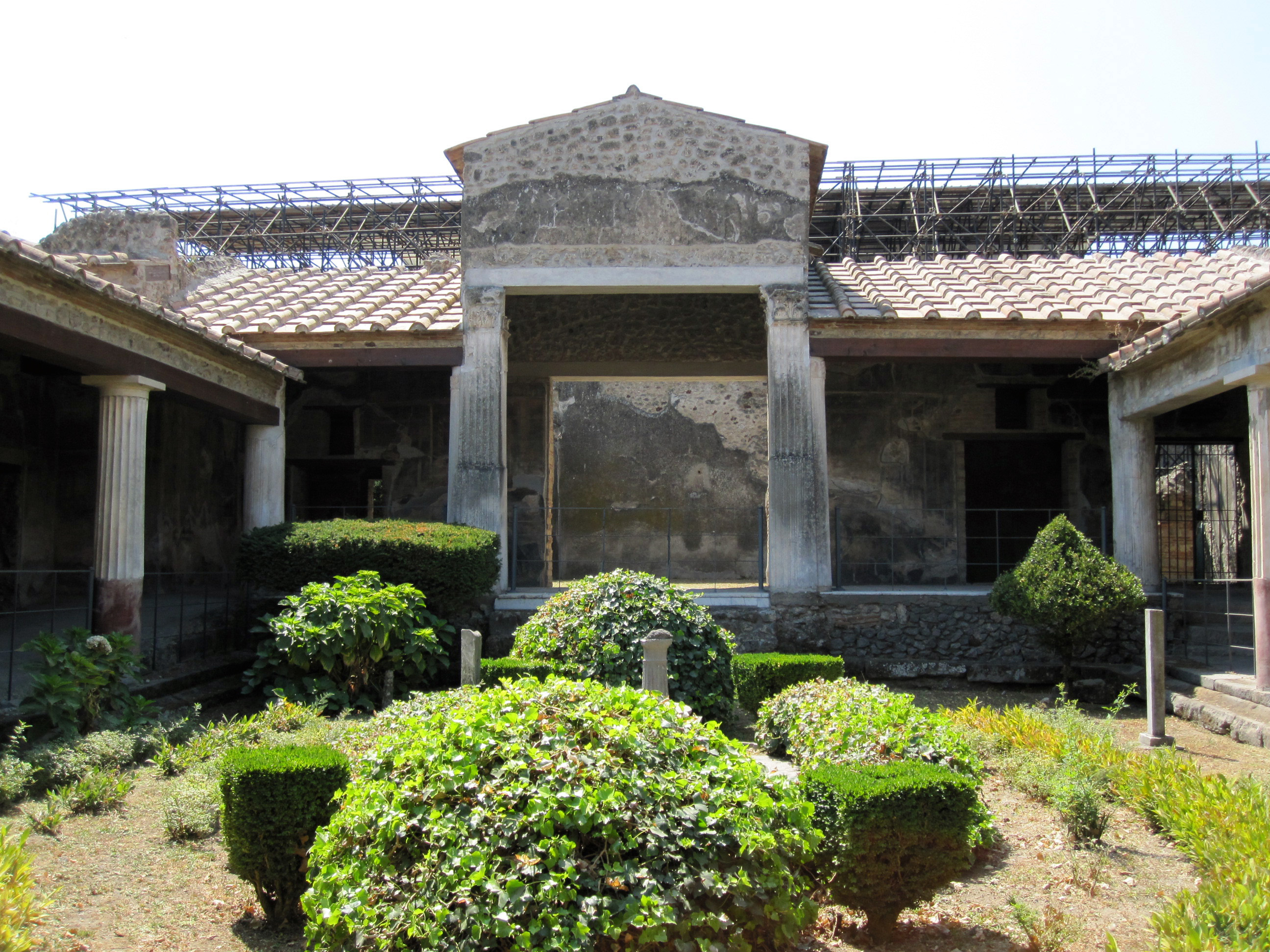 We walked through the Basilica and the Forum, and aside from the our tour of the Terme Suburbane we had private tours of Casa degli Amorini Dorati (golden lovers), Casa dell’Ara Massima, Casa del Principe di Napoli. There is nothing like being the only people allowed into an ancient site while others look on behind the bars in envy.
We walked through the Basilica and the Forum, and aside from the our tour of the Terme Suburbane we had private tours of Casa degli Amorini Dorati (golden lovers), Casa dell’Ara Massima, Casa del Principe di Napoli. There is nothing like being the only people allowed into an ancient site while others look on behind the bars in envy.
The House of the Tragic Poet was used as the model for the luxury bachelor pad of Glaucus, the playboy/cad hero of Sir Edward Bulwer-Lytton’s 1834 novel “The Last Days of Pompeii”. Bulwer-Lytton is most famous for creating the immortal opening line,”it was a dark and stormy night”.
The discovery of Pompeii became THE tourist destination of all traveling Europeans during the 19th century age of Romanticism and Bulwer-Lytton’s book was a monster hit. The house was recreated for a London exhibition of the ancient city but the only person allowed inside was Queen Victoria, who enjoyed a cup of tea.
It was also reproduced in Paris around the same time. Joseph Bonaparte and his friends would dress up in togas and have wild parties in the reproduction. Joseph was translated to Giuseppe Napoleon when he ruled over Naples for his brother Napoleon.
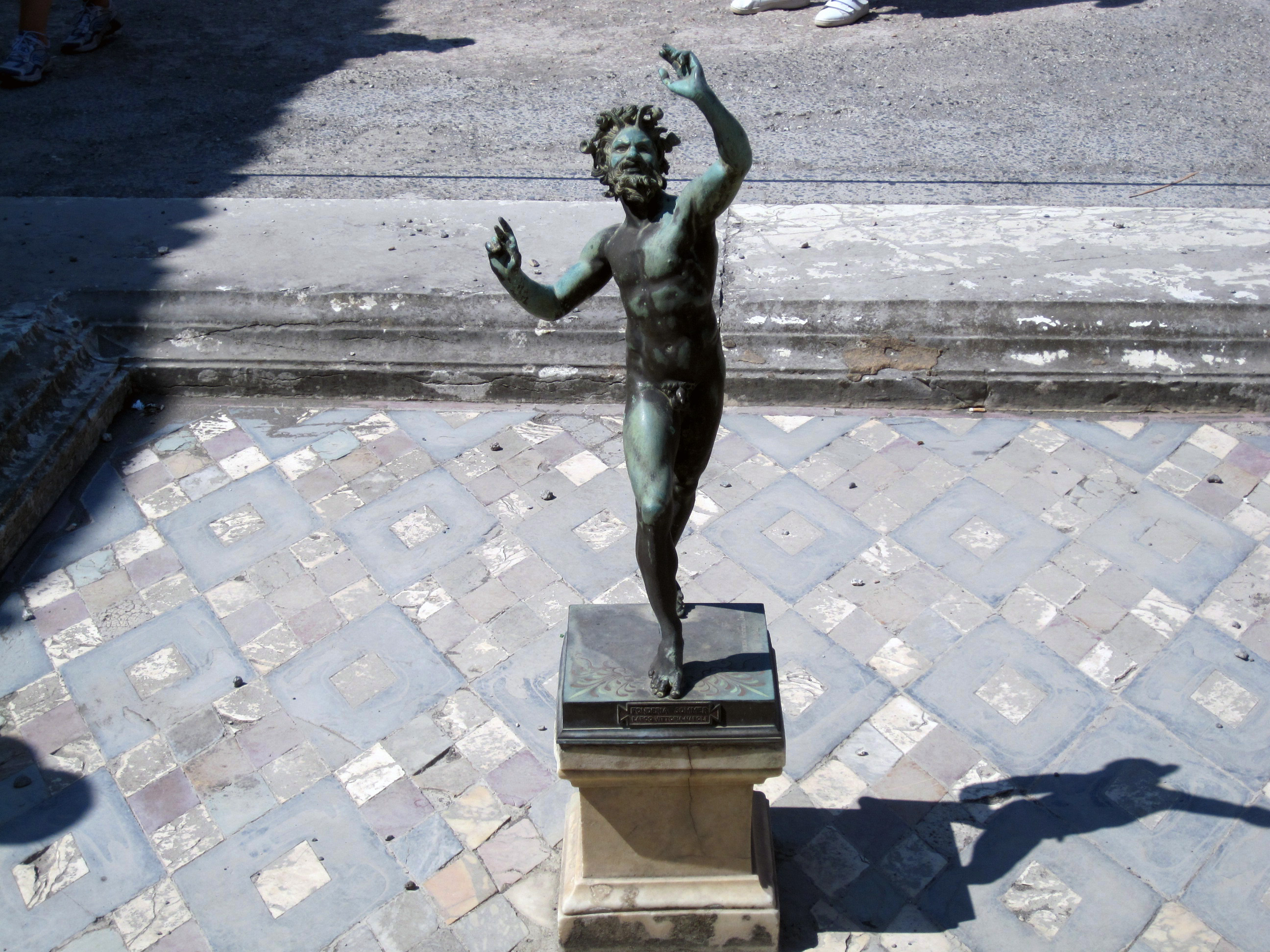 The House of the Faun – The faun is a satyr and probably another Pompeiian joke since the owner of the property was named Satirii. The house is one of the oldest in the city and was decorated in the 1st Pompeiian style of décor, lots of floor mosaics and simple frescos. The grand mosaic floor of Alexander defeating Darius that once decorated the villas is now at the Naples Archeology Museum. This is an enormous house, around 3,000 sq meters (almost 10,000 sq ft). It takes up one entire city block.
The House of the Faun – The faun is a satyr and probably another Pompeiian joke since the owner of the property was named Satirii. The house is one of the oldest in the city and was decorated in the 1st Pompeiian style of décor, lots of floor mosaics and simple frescos. The grand mosaic floor of Alexander defeating Darius that once decorated the villas is now at the Naples Archeology Museum. This is an enormous house, around 3,000 sq meters (almost 10,000 sq ft). It takes up one entire city block.
The Lupanar was one of the possible 36 brothels in the city. This was a larger one with working beds below and living quarters above. The erotic frescos on the wall might have served as a menu. The prostitutes were all foreign and possibly didn’t speak latin. The customers just pointed to the painting on the wall and announced “I’ll have this one.” It’s amazing how most of the “modern” world is still so against prostitution and yet the longest line of tourists here is always waiting to see inside the Lupanar.
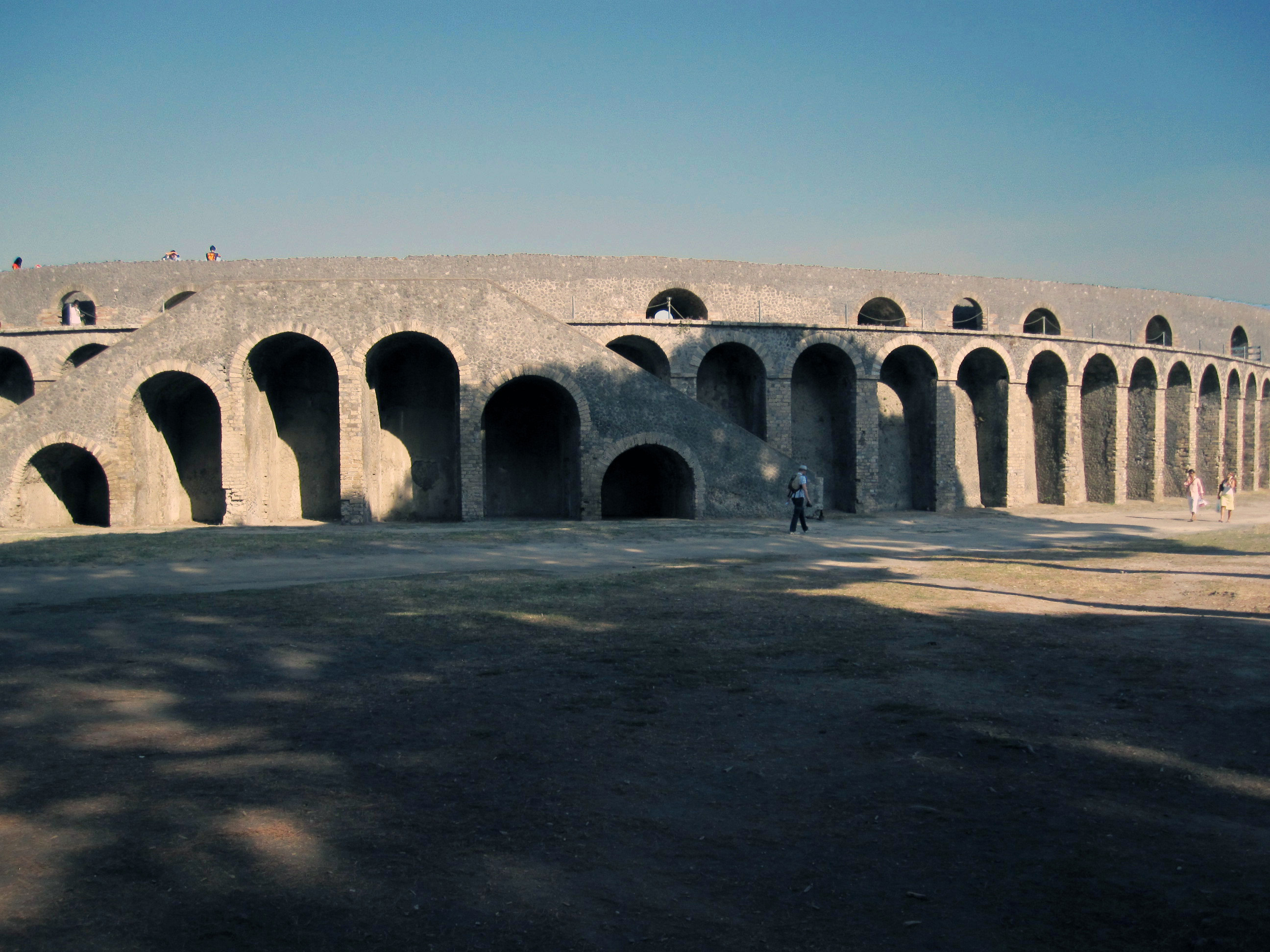 The Amphitheater of Pompeii was built before the Colosseum in Rome. It’s considered to be the oldest amphitheatre of it kind. It could hold 20,000 people but it had no toilets, although I don’t think that stopped anyone from urinating in the aisles.
The Amphitheater of Pompeii was built before the Colosseum in Rome. It’s considered to be the oldest amphitheatre of it kind. It could hold 20,000 people but it had no toilets, although I don’t think that stopped anyone from urinating in the aisles.
It was the only amphitheatre in the area. People would come from miles around for the entertainment at the Pompeii Arena and things could get very heated between rival cities.
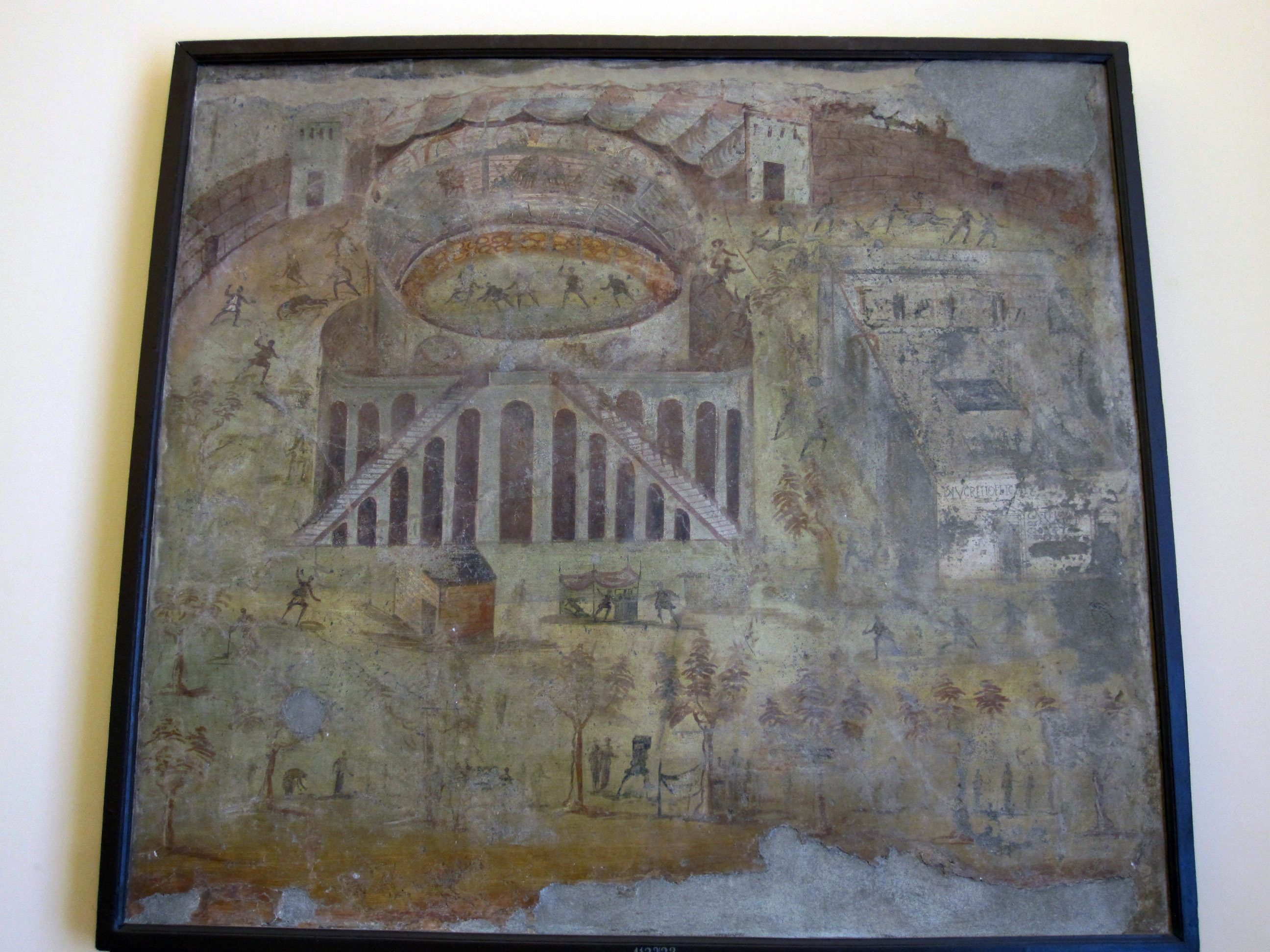 In 59 AD the games were shut down till 69AD because of a fight between the Nocerian and Pompeiian fans. As the rival gladiators were fighting each other in the ring in the ring , the rival fans broke out into a bigger fight in the stands. Soon the fans were in the arena, then in the streets.
In 59 AD the games were shut down till 69AD because of a fight between the Nocerian and Pompeiian fans. As the rival gladiators were fighting each other in the ring in the ring , the rival fans broke out into a bigger fight in the stands. Soon the fans were in the arena, then in the streets.
There is a fresco in the Naples Archeology Museum of the famous fight. It is a great pictorial record of the event. Since it all took place in Pompeii, the Nocerians definitely got the worst of it. When Nero visited the city in 63 AD he lifted the ban. The people really did love Nero. It was the Senate that hated him.
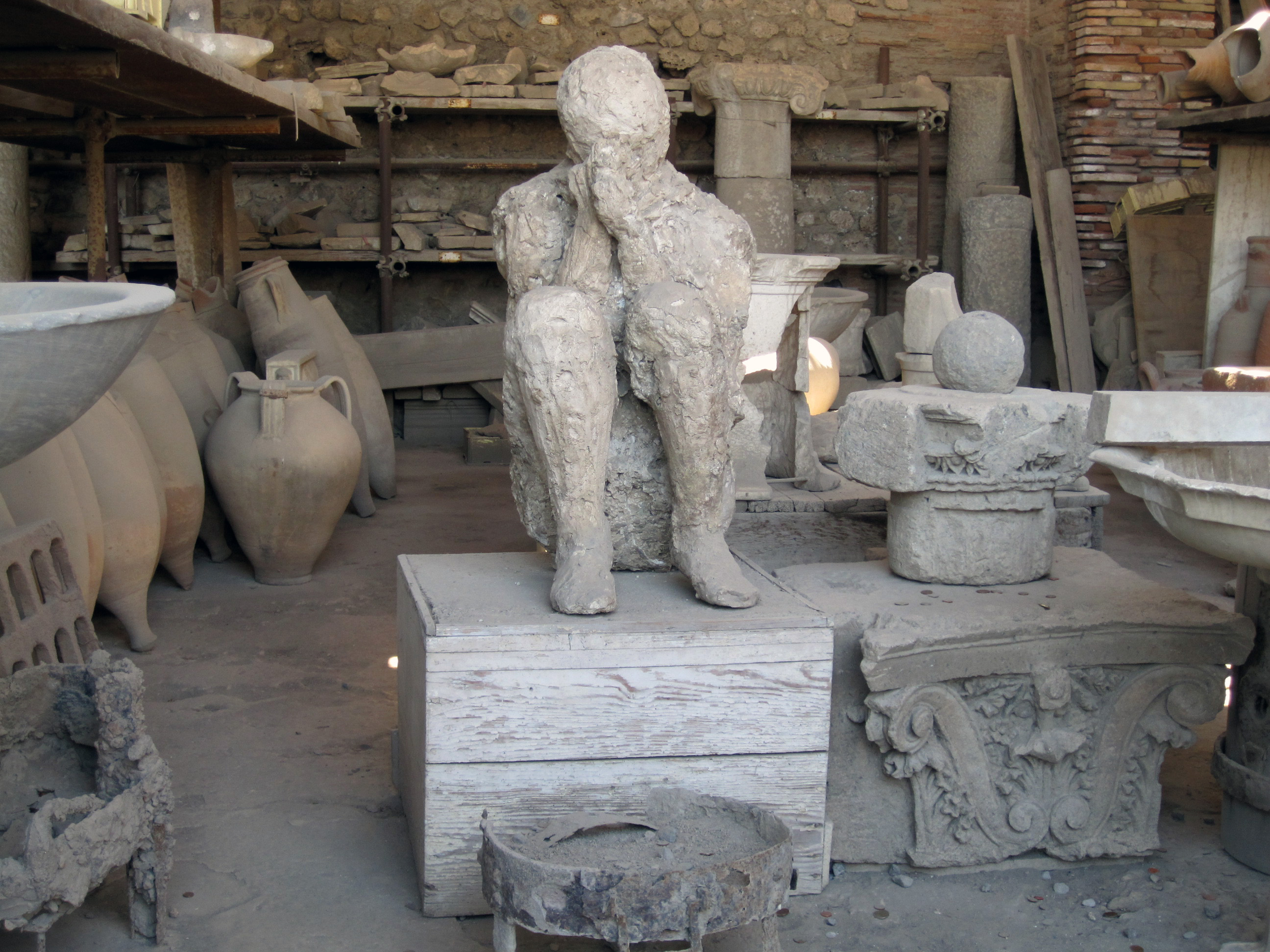 There are physical remains of the people caught in the eruption strewn around the site. They hid in their houses, or ran for the gate but never made it out.
There are physical remains of the people caught in the eruption strewn around the site. They hid in their houses, or ran for the gate but never made it out.
In 1860, Giuseppe Fiorelli took over the archeological site. During early excavations of the site, the remains of bodies were discovered in the ash. The ash created a seal around the body and all that was left inside were some bones and teeth. Fiorelli figured out that these cavities were the actual forms of the bodies and he developed a way to inject plaster into the cavity and recreate the human form.
When they cracked open the ash mold, they pulled out the plaster and then reassembled bones and teeth into their proper position, although later on it was discovered that some of the bottom teeth were put into the top and top teeth into the bottom.
We’ve been a bit afraid of Naples in the past. The reputation is far worse than the city. Yes, there is a lot of crime. The Camorra is a very large crime organization and some neighborhoods are definitely to be avoided. On our first day we walked to the Porto Nolana to catch the Circumvesuviana train to Ercolano. We got a few “what the *&#@ are you doing here” stares. When we later told our friend Fiorella about the adventure she screamed “I can’t believe you went there. This is one of the most dangerous places in all of Napoli.” We also found out we had been walking in a few other pretty bad neighborhoods. It’s best to ask your hotel personnel first. If you are planning the take the Circumvesuviana train to Pompeii or Ercolano (and I totally suggest you do), go the Piazza Garibaldi main train station. You can also take the Circumvesuviana from Sorrento.
The streets of the old historic quarter are narrow, dark and foreboding and the buildings are covered with graffiti. But with the proper guide they are incredibly interesting. Our friend Fiorella Squillante is the incredible guide. She is an ambassador of Naples, a great historian and someone who truly loves the city. It’s infectious. When you walk around a city with someone who truly loves the place, you get a much better feeling for the city. I am beginning to really love Napoli.
Cab drivers in Naples are charmingly dishonest and they’ll do their best to overcharge you. Naples is trying to make it easier on visitors by putting into effect a zone pricing. From the train station to our hotel is an €8.50 fare. We were charged €8.50 on our first time from an honest cabbie. The second time the cabbie wanted €12. We told him the fare was €8.50 so he said OK I’ll only charge you €10. Ask your hotel to explain the cab fares. It’s a little confusing but it’ll save a lot of money.
In the defense of Naples cabbies, even though they’ll do their best to separate you from your euros, they are quite entertaining. One night coming back from the Castel del Uovo to our hotel in the Centro Storico we flagged down the famous “crazy singing cab driver of Naples”. He wanted €15. We argued the zone fare was €10 but he explained there was a night supplement of €2. It’s amazing how he came up with €15 by adding €10 + €2. From the moment we got into the cab till the time we got out, about 15 minutes, he sang to us in a loud Napolitano operatic voice, waving one hand in the air as the other guided the steering wheel through the narrow streets. We laughed and applauded, he sang more. As we approached the hotel he told us one of his fares made a movie of him on YouTube. When we got back to the room, we clicked on YouTube and typed in “crazy singing cab driver in Naples”. There he was.
 A good 3 hours can be filled in the Naples National Archaeological Museum (Museo Archeologico Nazionale di Napoli). We highly recommend visiting the sites of Herculaneum and Pompeii before going to the Naples Archeology Museum. After you visit the sites, the things taken from the sites and make more sense. Most of what is on display are the frescos from all 4 periods of Pompeiian art going form 2nd century BC to the eruption of 79 AD. Removing a fresco from a wall is an artform in itself. There are of 7 layers of stucco built up on top of stone walls. The plaster gets to be around 1.5” – 2” thick. The final layer is painted while the plaster is wet. Then it’s sealed with egg white. Then it’s sealed with a polished layer of wax and then the art is rubbed with a powder of marble dust to give it’s final bright shine. Some of the frescos are still in amazing shape, almost as if they were painted within the past 100 years.
A good 3 hours can be filled in the Naples National Archaeological Museum (Museo Archeologico Nazionale di Napoli). We highly recommend visiting the sites of Herculaneum and Pompeii before going to the Naples Archeology Museum. After you visit the sites, the things taken from the sites and make more sense. Most of what is on display are the frescos from all 4 periods of Pompeiian art going form 2nd century BC to the eruption of 79 AD. Removing a fresco from a wall is an artform in itself. There are of 7 layers of stucco built up on top of stone walls. The plaster gets to be around 1.5” – 2” thick. The final layer is painted while the plaster is wet. Then it’s sealed with egg white. Then it’s sealed with a polished layer of wax and then the art is rubbed with a powder of marble dust to give it’s final bright shine. Some of the frescos are still in amazing shape, almost as if they were painted within the past 100 years.
The museum also has some medical instruments on display, some household items, lots of statues and an exhibit of “Adult” frescos and statues. There used to be a special charge for the “Pompeii Porn” but now it’s included in the price.
The museum also has a collection of carbonized food (bread, meat, fish, fruit, grains) but they’re not on display. There somewhere in the basement with thousands of other items that never get to be seen.
 Our friend Fiorella took us on a long walk through the Centro Storico. This part of the city was built directly over the 5th century BC ancient Greek and Roman city of Neopolis with the typical Roman street grid of the Decumani streets going east to west and the Cardini streets going north to south. Our hotel is the Palazzo Decumani. Fiorella explained the Via dei Tribunali of today’s Naples was the Decumanus Maximus of Neopolis. There are a couple of entrances onto the old Decumanus Maximus and into the old markets of the city under the city.
Our friend Fiorella took us on a long walk through the Centro Storico. This part of the city was built directly over the 5th century BC ancient Greek and Roman city of Neopolis with the typical Roman street grid of the Decumani streets going east to west and the Cardini streets going north to south. Our hotel is the Palazzo Decumani. Fiorella explained the Via dei Tribunali of today’s Naples was the Decumanus Maximus of Neopolis. There are a couple of entrances onto the old Decumanus Maximus and into the old markets of the city under the city.
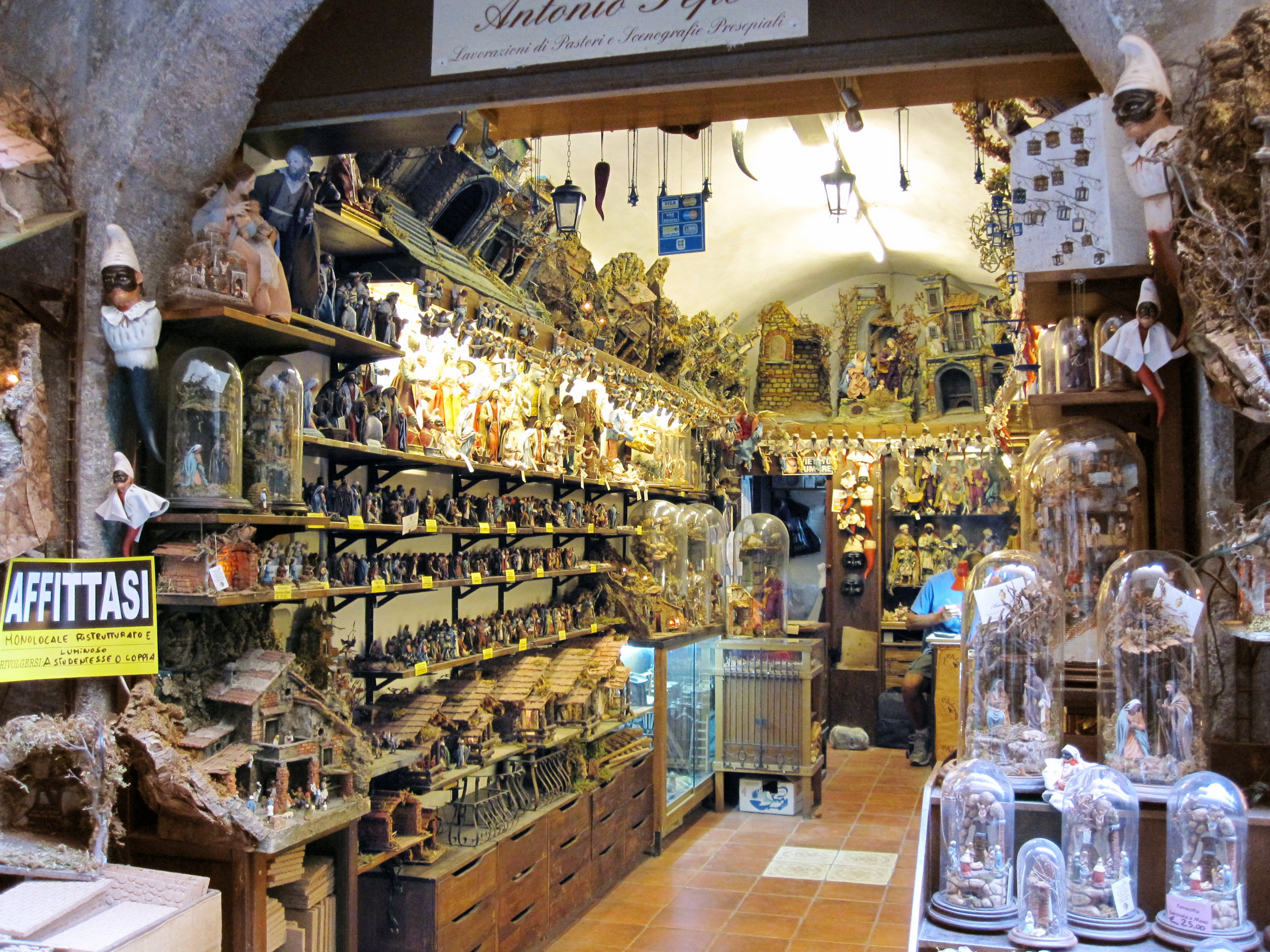 On Via San Gregorio Armeno, just off Via dei Tribunale, is the street of the nativity scene craftsmen. They’ve been making nativity-cresce,presipio-manger scenes for hundreds of years on this street.
On Via San Gregorio Armeno, just off Via dei Tribunale, is the street of the nativity scene craftsmen. They’ve been making nativity-cresce,presipio-manger scenes for hundreds of years on this street.
You can find your typical Mary, the wise men and baby Jesus. There are thousands of them. There are also thousands more of other miniature hand made models: animals, electric waterfalls, trees, bridges, houses, furniture, politicians, movie celebrities, even people burning in hell. From October to December you can’t move on the street. It’s totally packed with nativity buyers. This is a big business.
The Duomo, dedicated to San Gennero, is just a few blocks away. Gennero was the 4th century Christian Bishop of Naples who was beheaded in the Flavian Amphithetre of Pozzuoli (the birthplace of Sophia Loren).
Gennero is the patron saint of Napoli and every year on the 19th of September is his feast, which culminates in the miracle of the “liquification of the blood of San Gennero.
It’ss all a bit weird but the essence is (pun intended) that the Saint’s blood was saved after he was killed and has been stored in a couple of glass ampules in the secret vault of a secret bank somewhere in or near Naples.
Every year, on September 19th, one of the ampules containing the dried blood is paraded down the aisle of the chapel of the Duomo. The chapel is glowing with silver. It’s the only chapel that still has it’s silver. All the other churches were looted by the Bourbons in order to raise cash to buy ammunition in the war against Napoleon. Napoleon won the war by the way but even he never looted the silver of San Gennero. In all of the silver splendor of the chapel, the statue of San Gennero is golden. As the Bishop carries the dried blood towards the statue, the crowd starts foaming with excitement. “Come on yellow face (in reference to his golden likeness), liquefy the blood”, they start screaming. They scream almost in a trancelike state until the final incantation is made and hopefully the blood will liquefy. The only year it didn’t work was 1980. That was the year a violent earthquake shook Naples to it’s knees.
Aside from the Camorra, the cabbies, the museums, the castles, the ancient ruins, the 250 churches and San Gennero, Naples has Pizza. This is the home of great Pizza. It’s the best in the world. No, I’m sorry to say, your local Pizzeria in smalltown USA is probably very good, but it is not the best Pizza in the world. The best pizza in the world comes from Naples. The Neopolitani might not have much pride in the shape of their buildings or streets but Pizza Pride in this city is serious. There is a very strict code of how a Pizza can be made and it’s all controlled very closely.
 Pizzeria Brandi in Naples invented the pizza Margherita in 1889 to honor the queen Margherita of the newly formed country but the art of pizza has come a long way. There is Ciro’s near Castel Uova. We ate here a lot in our last visit. When Bill Clinton visited the city in the 1990’s, he was walking down Via Tribunale when the Pizzaoilo came out of Pizzeria Di Matteo and offered Bill his famous pizza portafoglio (pizza folded in a paper cone. You can imagine the surprise of the secret service when Bill unwrapped the paper and took a bite. Bill like it so much, he immediately had another.
Pizzeria Brandi in Naples invented the pizza Margherita in 1889 to honor the queen Margherita of the newly formed country but the art of pizza has come a long way. There is Ciro’s near Castel Uova. We ate here a lot in our last visit. When Bill Clinton visited the city in the 1990’s, he was walking down Via Tribunale when the Pizzaoilo came out of Pizzeria Di Matteo and offered Bill his famous pizza portafoglio (pizza folded in a paper cone. You can imagine the surprise of the secret service when Bill unwrapped the paper and took a bite. Bill like it so much, he immediately had another.
In all the Pizza we’ve eaten here (and it’s been a lot) we will say the the best Pizza in Napoli these days is Pizzeria i Decumani, on Via Tribunale. We arrived at 7:45 (they open at 7:30) and there were only 2 tables left. When we left there was a line of 30 people waiting to get in. It’s worth the wait.
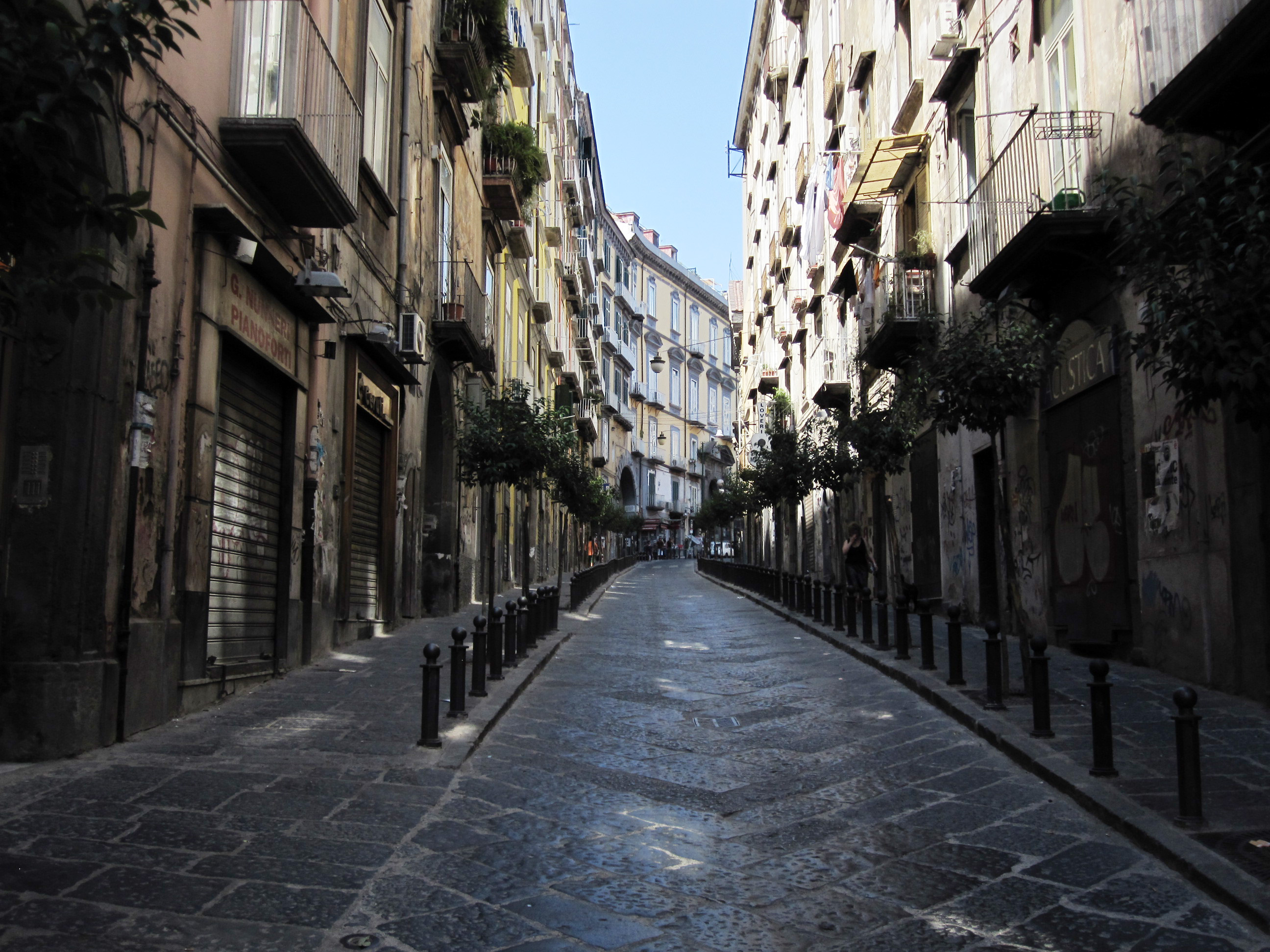
You must be logged in to post a comment.